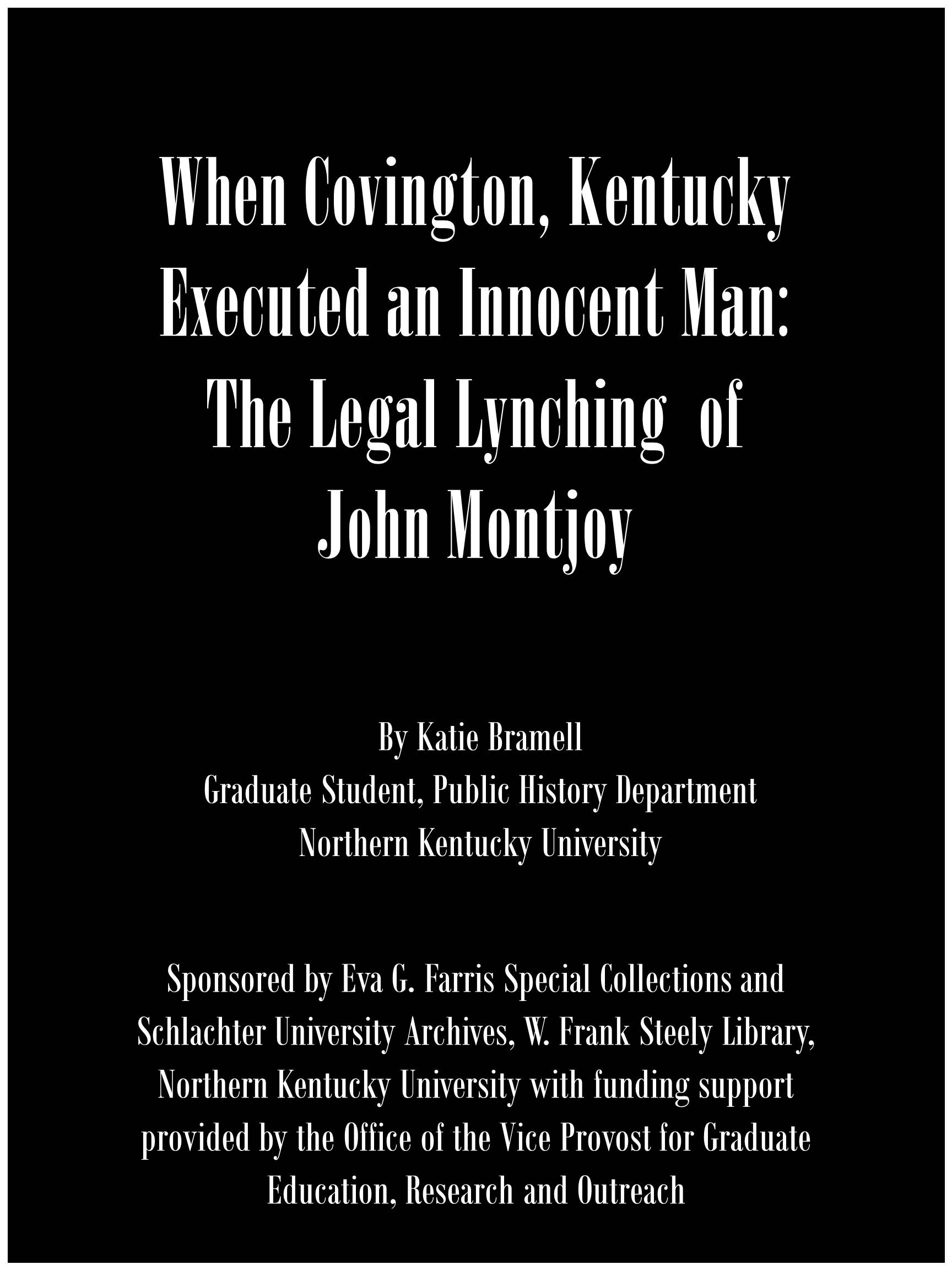By Katie Bramell
Special to NKyTribune
John Montjoy, an African American, was accused of the rape of a white woman in Covington in 1935. In this real-life version of To Kill A Mockingbird, Montjoy was convicted by an all-white jury, forced to confess under physical harm, subjected to racial prejudices during his criminal trial, and executed two years later by way of hanging in the courtyard of Covington’s City Hall.

Covington’s City Hall
On the evening of March 22, 1935, John “Pete” Montjoy agreed to meet his girlfriend of at least a year, Irene Cummings, in the parking lot behind the Kentucky Grill, a bar located in Covington. On his way, he met up with a friend, William “Willie” Black.
Together, Montjoy and Black walked to the alley located directly behind the Kentucky Grill where Irene Cummings had parked her car. What transpired next remained the center of debate for one of the most controversial rape cases the city of Covington has ever seen.
At approximately 8:45 p.m. on the night of March 22, 1935, Irene Cummings accused John Montjoy of rape.
In the two years following the alleged attack, the case would see two appeals at the state and national levels before Montjoy would ultimately be given a verdict of guilty and executed on December 17, 1937.
During these appeal attempts, the defense argued that not only did a romantic relationship exist between John Montjoy and Irene Cummings, but on the night of March 22, 1935, Montjoy was meeting Cummings in order to receive a payment for the “muggle cigarettes” he had been supplying her with. In the 1930s, “muggle cigarettes” were a type of marijuana cigarette. The defense would argue this point, as well as the most alarming injustice against Montjoy in the trial — the lack of evidence.
Much like Mayella Ewell in Harper Lee’s To Kill a Mockingbird, the prosecution could produce no evidence to prove a physical attack had ever occurred. Irene Cummings never submitted to a medical examination on the night of the alleged attack. The only examination from a physician occurred three weeks later — on the day before the trial — when physical evidence could no longer be obtained.

The exhibit at Steely Library
John Montjoy was convicted by an all-white jury. In fact, by 1935, no African American had ever served on a jury in Kenton County, to the best of anyone’s memory.
Furthermore, John Montjoy was placed in solitary confinement for six days prior to his confession, with little food and lack of sleep, before he was forced to confess under threats of serious harm and duress.
The case of John Montjoy had a lasting impact on the city and people of Covington. For decades following the event, African Americans in the community passed down the story of when a young man was executed for the color of his skin.
Katie Bramell is a graduate student in the Public History program at Northern Kentucky University (NKU). “When Covington, Kentucky Executed an Innocent Man: the Legal Lynching of John Montjoy” exhibit is on display in the Archives Research Room at Northern Kentucky University’s Steely Library, Room 106. It is visible through the archive’s display windows during regular hours of Steely Library.
























